By Ron Pesch
LocalSportsJournal.com
 MUSKEGON–Water is finite, only its state – solid, liquid, or gas – can change. Lost in Lake Michigan and the ice shavings of L.C. Walker/Trinity Health Arena is the history of Muskegon high school hockey.
MUSKEGON–Water is finite, only its state – solid, liquid, or gas – can change. Lost in Lake Michigan and the ice shavings of L.C. Walker/Trinity Health Arena is the history of Muskegon high school hockey.The sport itself has a long and rich tradition in this town dating back to The Mart auditorium that still stands on the Muskegon Lake waterfront. Construction on that structure began in early 1933, designed as Muskegon’s first true sports arena and convention space.
“It was the depth of the Great Depression,” noted local historian Marc Okkonen. The building was the third and largest originally constructed at the new port terminal of the West Michigan Dock and Market corporation’s 31-acre site in downtown Muskegon.
It opened in October with a boxing program, followed by a “monstrous parade” to dedicate the facility on Saturday, Nov. 4. An estimated 60,000 from all over the region attended. In December, the building hosted its first hockey game when “two crack Detroit amateur hockey teams sped through three periods of thrilling action” before a crowd of 800.
“The professional hockey games in Detroit and other cities attract thousands,” stated the Chronicle following the game, “and the result has been that hockey has become the leading winter sport in those cities. With the ideal facilities at the Mart, Muskegon probably will become the hockey center for Western Michigan.”
Amateur – and company-sponsored teams – quickly formed and plenty of local kids played hockey on the inch-thick frozen floor in the coming years. The semi-pro Muskegon Reds, and later, the Sailors, were resident teams. Because of consideration from The Mart, intramural hockey teams formed at Muskegon High School for three school years, 1938-39 through 1940-41 – “the only school in Michigan outside Detroit, backing this sport,” according to the school’s athletic director, C. Leo Redmond. During the 1939-40 school year, hockey drew 110 participants, second only to football.
However, “demand for lucrative storage space for Wisconsin dairy products (combined with) economic pressures and the side effects of World War II” forced (The Mart’s) owners” to finalize conversion of the structure into warehouse space in 1942, noted Okkonen. “The benefits of the Mart Auditorium were sorely missed by a generation of Muskegon residents …”
Eighteen years passed before the arrival of a new indoor facility in Muskegon. Ice skating and hockey games reverted to the days of old, once again dependent on the whims of Mother Nature. She was unpredictable, but generally kind to the area. Skating was popular along the frozen shore of Muskegon Lake, on Ruddiman Creek at McGraft Park, and later, at man-made, lighted rinks on flat surfaces at local parks and schools, as residents, young and old, embraced winter.
Beginning in 1945, the Muskegon Parks and Recreation Department sponsored an ice-skating tournament staged at neighborhood rinks around town. It would expand into an ice carnival a year later under the guidance of new director Chase Hammond and, in cooperation with the Muskegon Junior Chamber of Commerce and the Muskegon Optimist Club, would grow in the years to come.
In 1947, the city’s third annual affair, now christened the ‘Greater Muskegon Silver Skates’ event featured various speed races, “a basketball game on ice, and a hockey game between Muskegon and Muskegon Heights High school teams,” played out on a lighted ice rink at the old Ginman boat dock off Lakeshore Drive in Lakeside. Interest in the game continued to grow. In 1948, locals could again watch a semi-pro team, the Muskegon Shamrocks, play hockey on Lakefront field rink, an iced-over softball diamond on North Fourth Street (today, approximately, the location of Pigeon Hill Brewing Company.)
The city was annually preparing up to nine ice rinks around town. By 1959, that included – weather permitting – surfaces at Reese, Sheldon, Marquette, McCrea, Marsh Field, Park Avenue, McGraft, Seyferth, and Bluffton playfields. At each, outdoor activities were supervised.
A New Facility
With the opening of the L.C. Walker Arena, dedicated in October 1960, the seeds planted at the Mart and elsewhere were ready for harvest. Thanks to the efforts of George Dellinger, general manager of the arena, and Gil McKellen, arena skating professional, youth would skate indoors again. Soon, the city’s Parks and Recreation Department partnered with the Muskegon Optimist Club to sponsor hockey for boys, ages 10-17, indoor figure and dance skating classes, and open skating at the new facility in downtown Muskegon. (Local “rink rats” at The Mart, Gil and his brother Gordon had parlayed a unique acrobatic act staged on ice into a two-decade long career performing with world famous ice shows.)
The arrival of the International Hockey League’s Muskegon Zephyrs ramped up interest in the game in the area. Soon there were 169 boys playing across 14 teams in Pee Wee, Bantam, or Junior leagues.
While hockey was not listed amongst sports sponsored by the Michigan High School Athletic Association (MHSAA), the state’s governing body for prep sports, “the genial athletic director at Muskegon Catholic Central,” Ed Farhat, pitched the idea of a high school hockey program to local sports administrators in January, 1961.
“Three of our top institutions – Michigan Tech, Michigan State and the University of Michigan – compete in inter-collegiate hockey. Up in Houghton it always has been a major sport. I hear that seven Detroit high schools have formed a hockey league.”
So Farhat posed the question, why not prep hockey in Muskegon?
“During the fall, we list 160 or more boys taking part in our football program. Later, when basketball takes over, we note a decided decline in the number of participants. It could be that hockey, even on an intramural basis at first, would take up this slack,” Farhat told Muskegon Chronicle reporter, Ed Young. “Our coaches report hockey playing by teenagers continues to expand in the area although most of the games lack supervision … Now that adequate indoor facilities exist, thanks to the generosity of L.C. Walker in providing a wonderful sports arena, I am inclined to look with favor on formation of a high school league comprising teams within an area bounded on the north by Montague and on the south by Grand Haven.”
“Financing,” he noted, “would be the first major hurdle. It costs money, lots of money, to equip a hockey team. I would suggest each school look into the problem, then tackle it as they would any other sport.”
Launch
It took just over a year to unveil, but “Hockey on the high school level (made) its debut at the L.C. Walker Arena” on Wednesday, Feb. 28, 1962.
“The schools are not sanctioning the game as an official sport,” mentioned the local paper in coverage, “yet the boys playing will be playing just as hard for the honor of their schools.”
That technicality didn’t deter attendance for the area’s first game.
“A crowd of 1,385 paying customers watched Muskegon down Muskegon Catholic Central, 5-3, in (a) fast and extremely well-played tilt,” stated The Chronicle. “The Big Reds never trailed in the game but had to come up with two goals in the final period to win it.”
Muskegon’s Larry Maxwell scored the opening goal at 9:06 of the first period, while Jim Zatalokin upped it to 2-0 just 31 seconds into the second stanza. Both Maxwell and Charles Porkka scored twice for the Big Reds. Dan Derezinski posted MCC’s first marker. Tom Robinson and Terry Herron added third period goals for the Crusaders. Carl ‘Skip’ Howell III, goaltender for the victors, recorded 29 saves.
“We were sponsored by Zephyr (Oil) and were called Junior Zephyrs,” recalled Howell over 60 years later. “We had red uniforms.”
Skip’s dad, Carl Howell, Jr., a former goalie, coached the team. Joe Maxwell assisted. Both had played intramural hockey at MHS and were later stars of the old Muskegon Sailors and Shamrocks. Bert Ferguson coached the Crusaders.
A couple of weeks later “Muskegon’s Junior Zephyrs” drubbed a team from North Muskegon, 9-1, in the second round of high school hockey at the arena. The crowd of over 700 fans who attended also “saw the Hawks of (Muskegon) Community College crush Ferris Institute 9-5 in the opener.”
Jim Imbault scored the Muskegon area’s first hat trick with a goal in the second period, and two in the third, for the Junior Zephyrs.
“The Norse tallied first with Doug Sweet scoring from Ray Schuitema and Fred Scheffler, a 13-year-old from the city’s Bantam League. The northsiders were shorthanded in absence of Tom Moyes, starting wing, a varsity basketballer, whose coach declined to let him play in face of upcoming regional cage tournament …”
Tom, a multi-sport star at North Muskegon who tragically passed away young, was a 3-year starter in basketball.
“My brother stood only about 5’4 and weighed about 125 … (but) was 10 times the athlete that I was and just a natural at anything he did in sports,” recalled Muskegon’s ‘ole announcer,’ Jim Moyes, when quizzed about the situation. “Tom did not even own a pair of hockey skates until the 1961-62 season. Tommy was such a natural that he was the third-leading scorer in the league even though this was the first year he had ever had a hockey stick in his hands. I believe they had a picture in The Chronicle late in the hockey season … and Tommy was a part of the picture. Basketball coach Bob Morris has no idea whatsoever that his captain of the North Muskegon basketball team was playing hockey at the same time until he saw that photo … Naturally, he had Tommy quit hockey.”
“The abbreviated but quite successful high school season” ended in late March with a 4-3 win by the Junior Zephyrs over Muskegon Catholic.
Two other high school groups – Reeths-Puffer and Western Michigan Christian – expressed interest in joining the league for the 1962-63 school year. However, expansion wouldn’t happen for another year, so the teams squared off for another season, with Ron Stephenson, from the IHL Zephyrs, recruited to coach the Crusaders.
“I had quit playing hockey,” said Stephenson, “and wanted to give something back to the community.”
Roger Willcutt, who played for the Junior Zephyrs, recalled those early days.
“Compared to today, honestly, everybody was still learning the game. Well, all the coaches were the old guys that had played for the Sailors and the Reds and (teams) like that – a totally different style of coaching. I do remember, my junior year, we had a dandy of a bench-clearing brawl. I went down and parked myself on the puck and a guy jabbed me … so I jabbed him back. He decided to take a whack at me. By then, Jerry Collins was cruising in.” Collins would star on the football field for the Big Reds, and later played in the National Football League for the Buffalo Bills.
“Yeah, you get all that testosterone going on out there,” laughed Willcutt, recalling the memory. “Surprisingly, other than Jerry, most of the guys were just single-sport guys that latched onto hockey.”
A year later, the circuit did expand, but only with a team representing Mona Shores. They were coached by Tony Beda, another Muskegon semi-pro veteran.
“More than 100 boys from the four schools are practicing hard and each team has a nucleus from the Junior Hockey league program,” noted The Chronicle. “Coaches and those connected with the program hope for a good attendance to convince schools that hockey could be made a regular part of the schools’ sports program.”
In the loop’s season-opening doubleheader, Muskegon, undefeated over the previous two seasons, topped Catholic Central, 5-3, while Mona Shores edged North Muskegon, 5-4. Three weeks later in another twinbill played before a crowd of 1,000 fans, Catholic handed Muskegon their first loss on the year, 4-1. Chuck Atwood – replacing an injured Craig Bundt in goal – “stopped the Junior Zephyrs cold after a first-period score by Joe Fearnly. Atwood kicked out 35 shots while Dave Cereska, Tom Houle, Ron Bohland and Tom Flynn scored in the second period.” Shores again topped the Norsemen as the Sailors’ Jim Buck broke a 5-5 deadlock with the game winner at 16:09 of the third. Proceeds from the games were split between programs for the purchase of uniforms and equipment.
The area saw its first co-op team during the 1964-65 season as the Northside squad now featured skaters from both North Muskegon and Reeths-Puffer. While the student body had taken interest, and photographs occasionally appeared in school yearbooks, school administration still didn’t sponsor the sport, and the season was short. The Junior Zephyrs topped Mona Shores, 5-2, in mid-March to claim the Greater Muskegon High School Hockey League title. Fearnly, a junior, posted a hat trick for Muskegon, while Collins scored his first goal of the year, unassisted.
The Muskegon team again wrapped up the league title in 1965-66, posting a 3-1 win over Catholic in the season finale in late March, to finish with a 4-1 league record, followed by the Crusaders at 3-2. Shores wrapped their season with a 4-3 win over North Muskegon to earn third place. It was expected teams would be back for another season, but that wasn’t the case. Newspaper searches going forward only show game results from 20 Pee Wee, Bantam, Midget, or Junior teams.
Prep Hockey Returns
“Back in the day, Muskegon had Saturday morning hockey for area kids,” recalled Martino Bartoli. “So, we got to play on teams with kids from all over different school districts.”
In the fall of 1973, teams comprised of players with previous experience in the area’s youth hockey program were assembled based on connections to six area schools. Those squads, representing Catholic, Muskegon, Mona Shores, Reeths-Puffer, Whitehall-Montague and Fruitport were scrimmaging each other. Like years past, they were club programs, not funded by the schools.
“Eventually, a few of us took it upon ourselves to approach our high school athletic directors to see if they could coordinate a hockey league,” continued Bartoli, who skated for Catholic. “That’s when we took it to Parks and Recreation and Gil Buckley (Walker Arena building superintendent) and it just took off from there.
“I was asked to put together a high school hockey league,” recalled Ric Scott, retired Director of Muskegon’s Parks and Rec Department – later renamed Leisure Services.
Thanks to their efforts, come that February, a makeshift four-game schedule was comprised, with games played at the downtown arena. Muskegon, with a 4-0 record, topped the “North” division standings, while Catholic grabbed “South” division honors with a 3-1 mark. However, no overall champion was declared.
“Initially our first partial season, Ron Stephenson, and Stan Konrad coached Catholic,” added Bartoli, “and then Stan went to Shores the following season.”
That following year, Scott and staff had the same teams playing in the reincarnated ‘Greater Muskegon High School Hockey League.’
“The doubters who said prep hockey would die on the vines before it ever got off the ground here are eating their words now,” wrote Chronicle sportswriter Mart Tardani in January, 1975. “Six local schools have completed the first round of action and the three-games-per-night are averaging over 800 cash customers.”
The circuit’s 10-game schedule ran from December to March with each school playing each other twice. Coached by Ron Kasher, Muskegon won the league with a 7-1-2 record. That 1974-75 season marked the year the MHSAA sponsored their first postseason hockey tournament. But since Muskegon area teams were still club squads, they could not participate in the state playoffs.
In 1975-76, the team total was up to eight with the addition of Orchard View and Tri-Cities (a co-op of Grand Haven, Ferrysburg, and Spring Lake) to the league. The Whitehall-Montague co-op was now known as White Lake. Each team now played 14 games.
According to league Director of Communication, Al Loyd, “Due to conflict caused by the many uses of the L.C. Walker Sports arena,” games were moved to the recently opened Greater Muskegon Ice Arena on Airline Road, with contests played on Wednesday and Thursday nights. Admission was $1 for students and $1.50 for adults, designed to help cover expenses.
Coached by Konrad, another former Zephyr, and skating in front of league ‘Goaltender of the Year’ Bryan Richards, the Sailors posted a shining 13-1 mark to win the league, followed by a postseason championship playoff game against Muskegon, won by Shores, 2-1. Catholic finished second in the standings, with the Big Reds in third. The Crusader’s Chris Donovan grabbed the GMHSHL scoring title with 41 points on 22 goals – also tops among clubs – and 19 assists. Teammate Ed Thompson, with a league-leading 25 assists, finished second with 38 points.
Led by senior co-captains Larry David and Dave Streeter, Shores repeated as champs in 1976-77, ending the year with an 18-2 record. Senior wing Scott Johnson led the league with 30 goals, while David chipped in 27, finishing his career with 79 goals and 96 assists over three seasons.
“I would have loved to have this club compete in that state meet,” Konrad told the paper’s Tardani as the league season wrapped up. “The (MHSAA) hockey tournaments are no different than the annual basketball tourneys. You know the college scouts are going to be there to see who can perform under pressure. It’s really a shame my kids and schools like Catholic Central (second in the league) and Reeths-Puffer (third), both of which also have fine teams, won’t get the opportunity to play in the state this year. We all would have the exposure and maybe some kids would have been offered (college) scholarships.”
The teams hung around for one more season. In 1977-78, games returned to the Walker Sports Arena. Shores again finished atop the final league standings with a 13-1 mark. Again, Catholic ended in second place with a 10-2-2 record and Reeths-Puffer (10-3-2) in third. Rockets’ senior Joe Balaskovitz led the league in scoring, with a whopping 30 goals and 20 assists for 50 points. Sailor Rick Borgeson finished second in points, with 42, and lamp lighters with 18. RP’s Paul Sheler was tops in assists with 25.
With limited funds, schools statewide were still in the process of expanding athletic opportunities for girls tied to the passage of Title IX. Without financial support, high school hockey again disappeared from the area.
“I enjoyed working with the kids,” recalled Stevenson. “It just got too darn expensive. We couldn’t afford it.”
In 1979, the Greater Muskegon Ice Arena, built in 1975, converted to a roller-skating rink called ‘The Galaxy,’ often forcing those that played to seek ice time in Grand Rapids or Big Rapids. Youth hockey continued in the area, but it took a dedicated group of individuals to restart the game at the high school level with the reintroduction of Mona Shores club hockey in 1988-89. A year later, the sport was officially sponsored by the school district, and the Sailors were now eligible for participation in the MHSAA postseason tournament.
The re-opening of the Airline Road facility as the Lakeshore Sports Centre in 1997 helped spur growth. Reeths-Puffer moved a club program to varsity in 1997-98. The Sailors earned their first MHSAA regional title that same season, then captured their first hockey state title in 1999-2000. In a nod to the past, Shores annually hosts the Stan Konrad Showcase, honoring the memory of their first coach, who passed away due to cancer in his 50s in 1990.




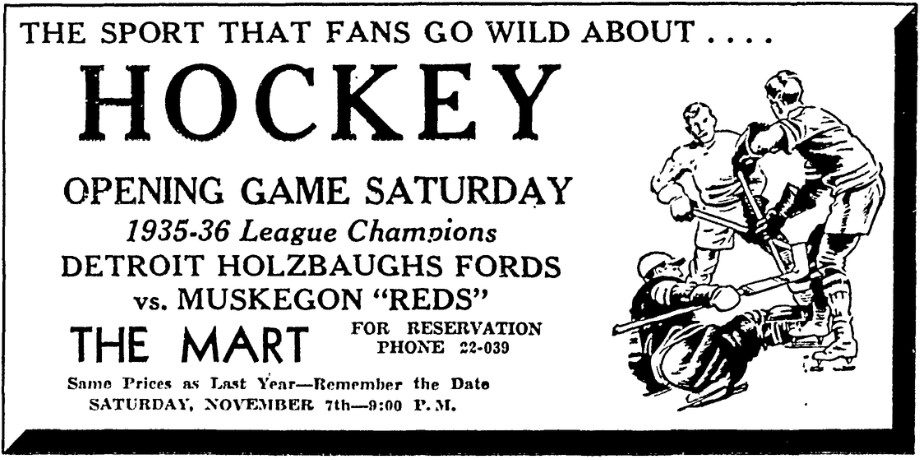





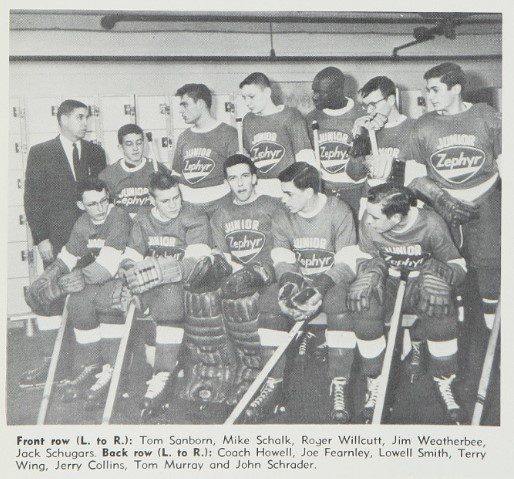
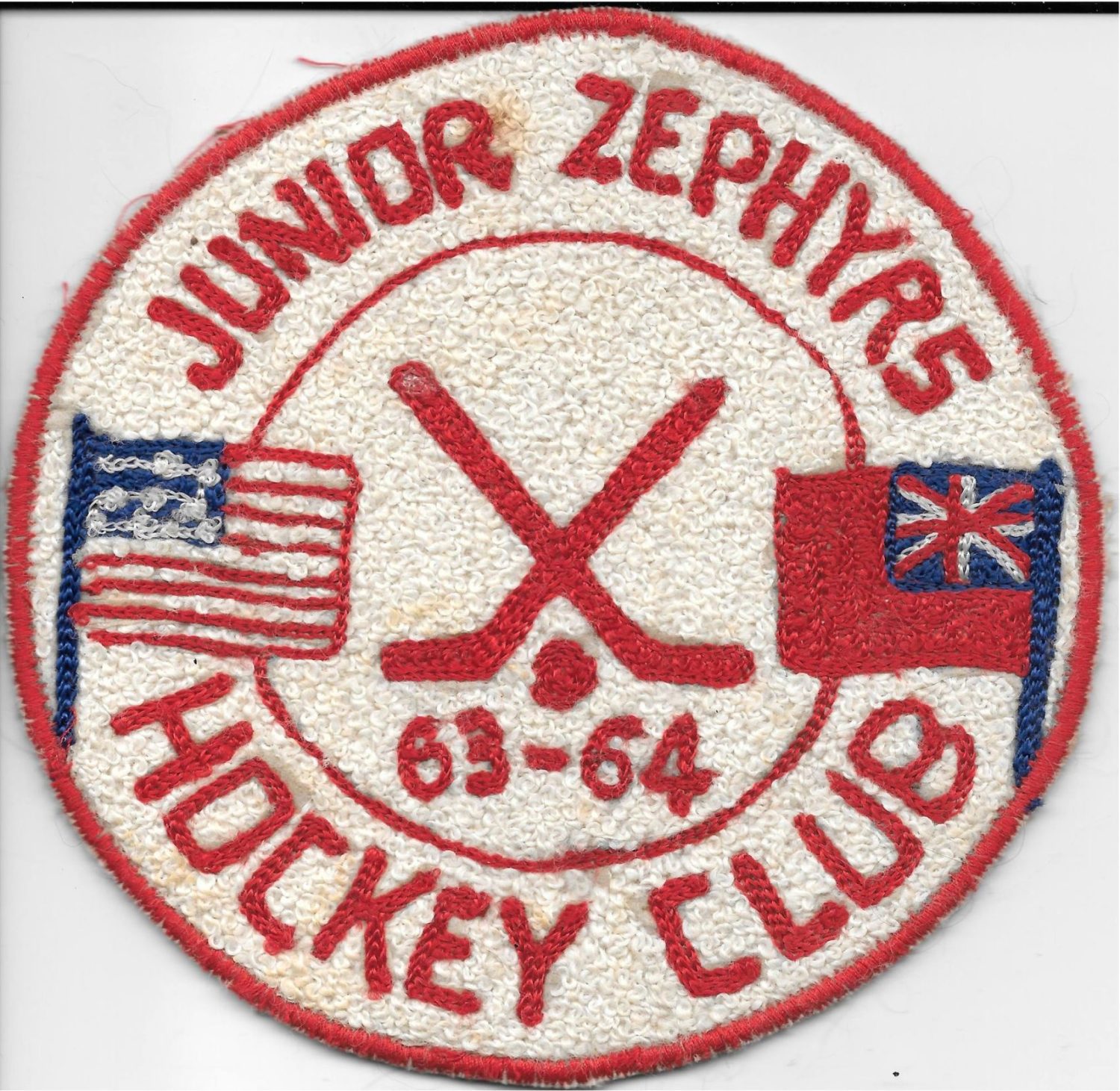

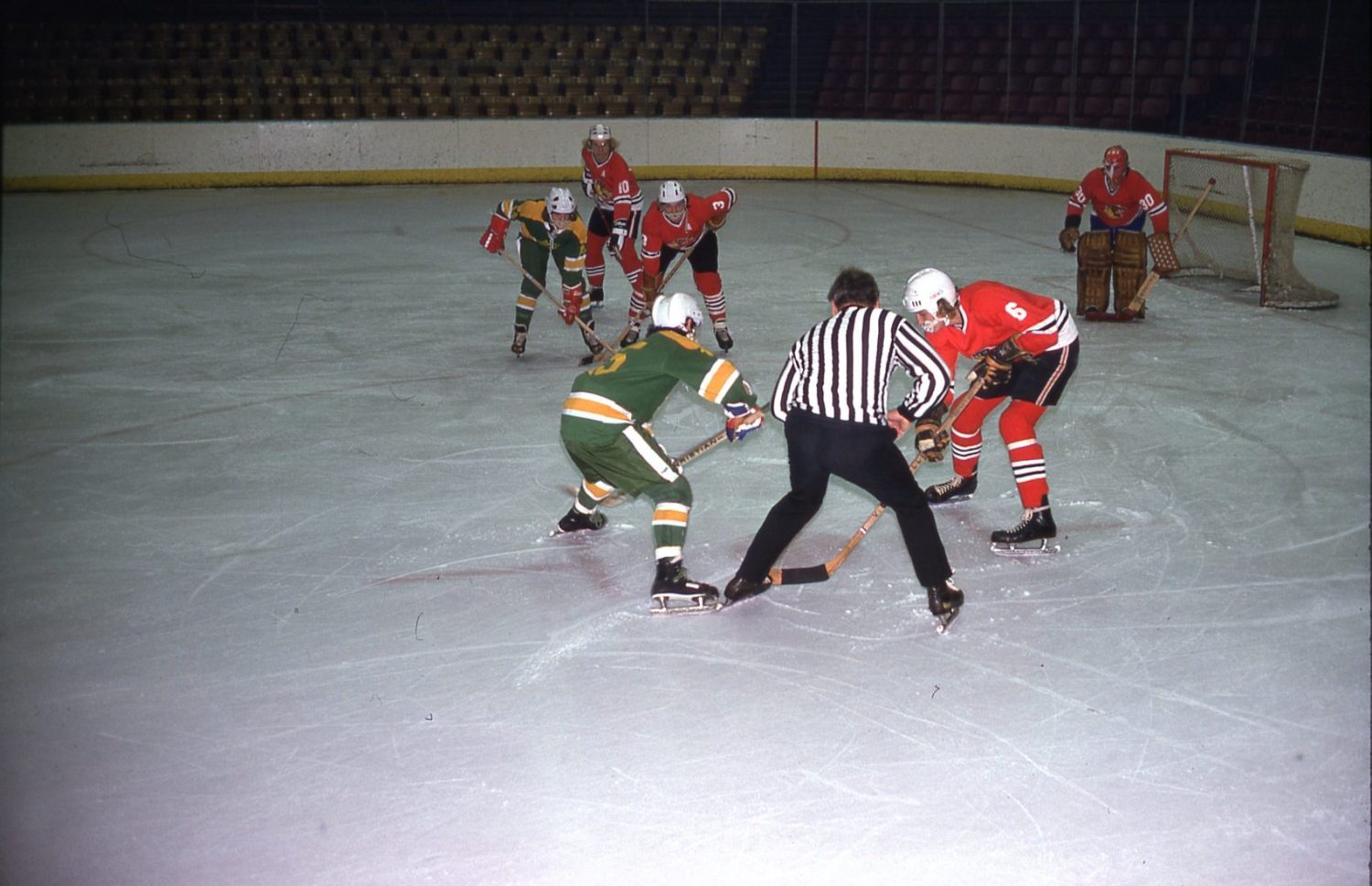
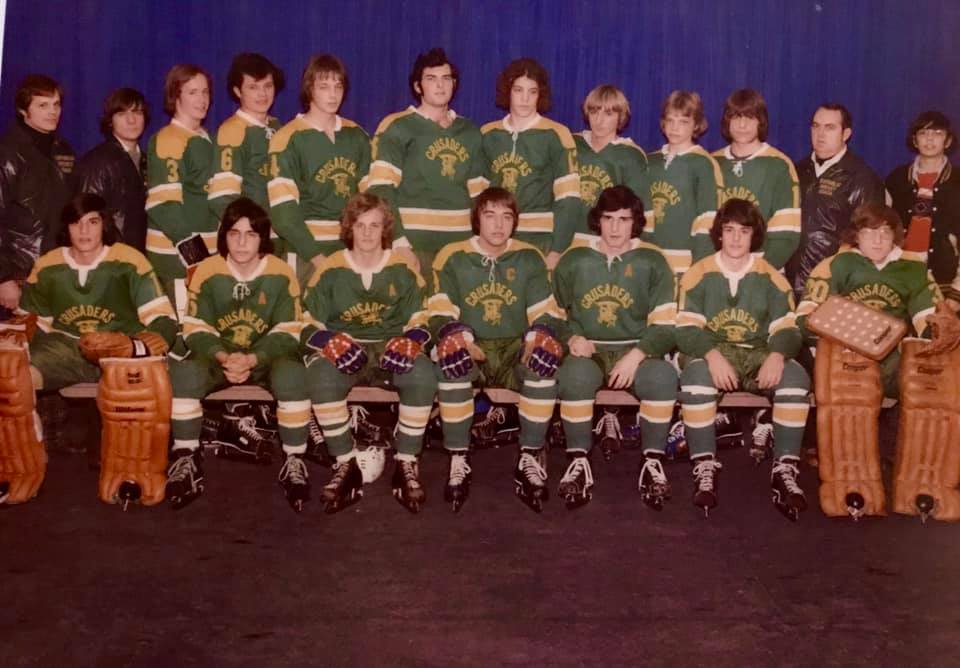

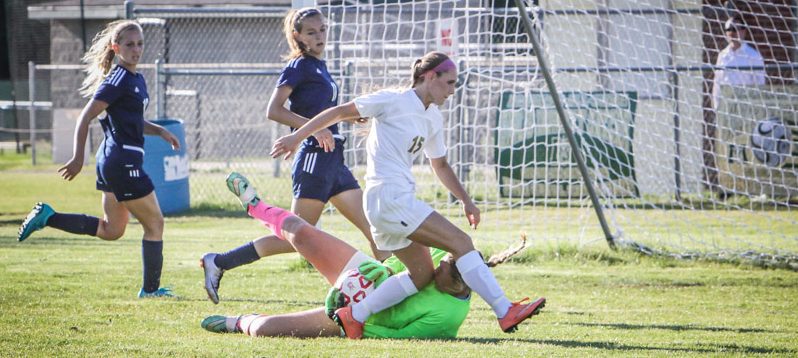

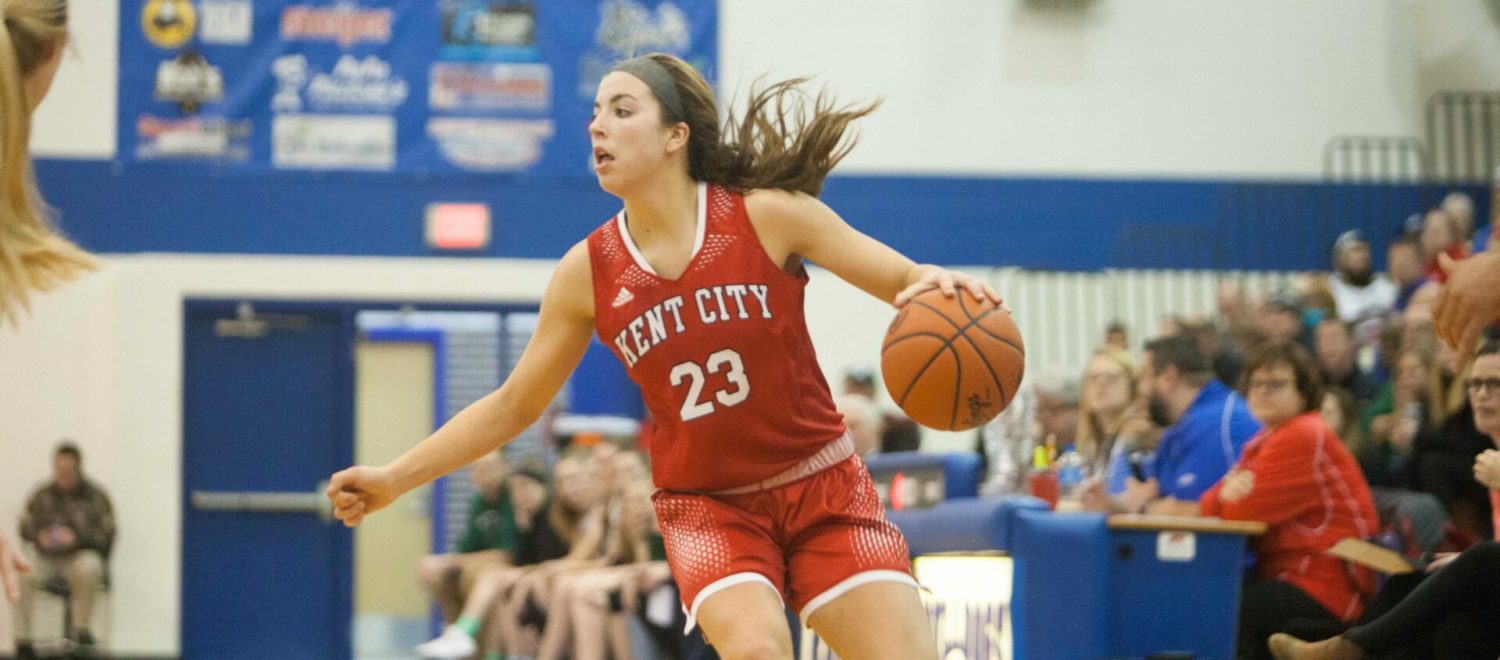
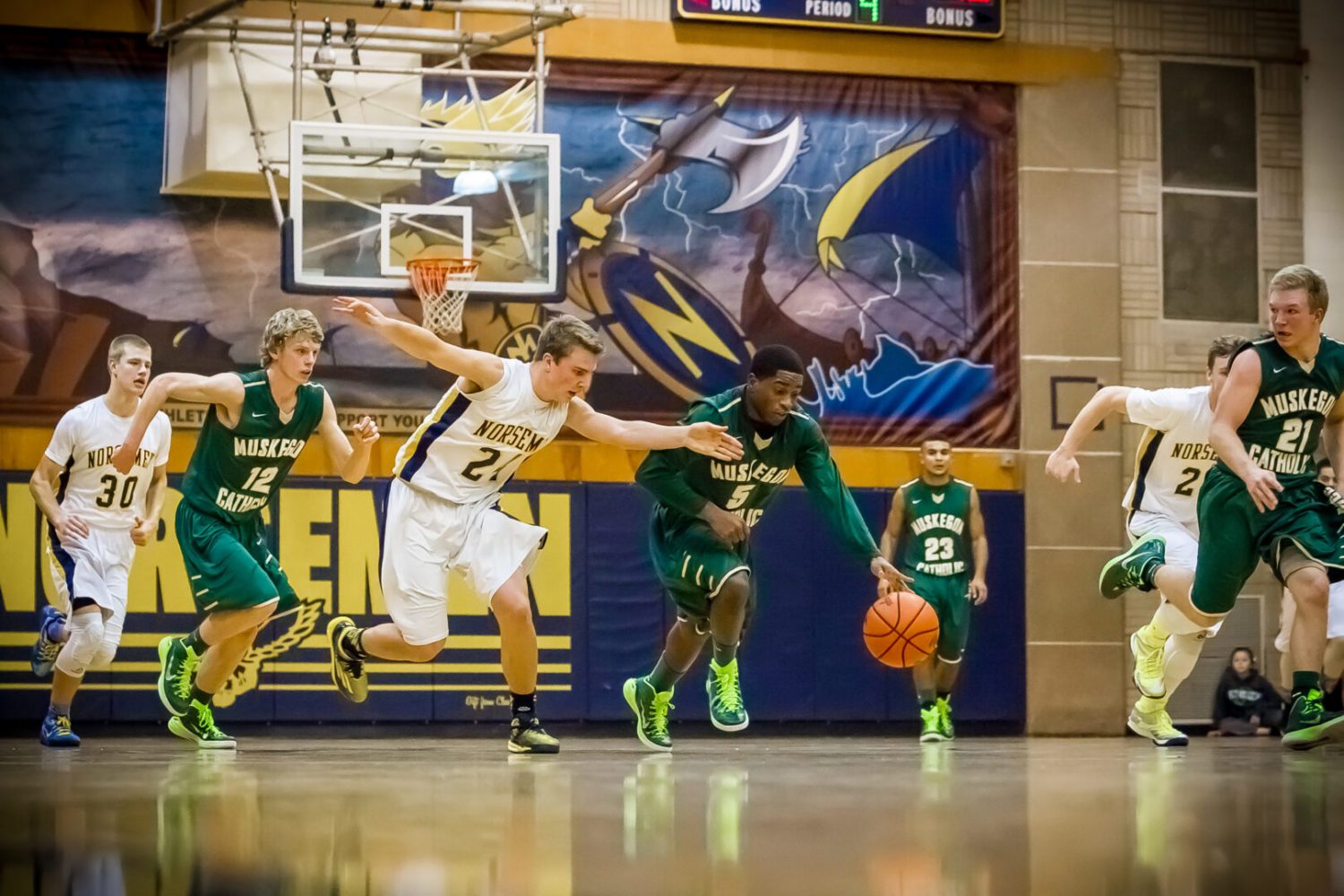
A great article by Mark. So cool to the photos, especilly of the Junior Zephyrs with my father, Carl Howell as coach. Lots of names from my past that brought back memories. Thanks!
Carl Skip Howell
Carl, you should write p a history because you lived thru it. We’d all like to know how you made it to MSU. Do you have any pictures of you in an MSU uniform. Go for it. Husiak
A great article! Growing up, and playing hockey during the 70’s and 80’s in Muskegon this article really hit home. The names in the article (Howell, David, Konrad, etc) are the true pioneers of Muskegon Hockey. Thank you very much for the “Great read”. Go Sailors!
Thank you for the memories. I was working at Fruitport Golf when the MHSAA ADs held their meeting in town. The head of the organization promised that hockey would never be accepted. Man, was he ever wrong.